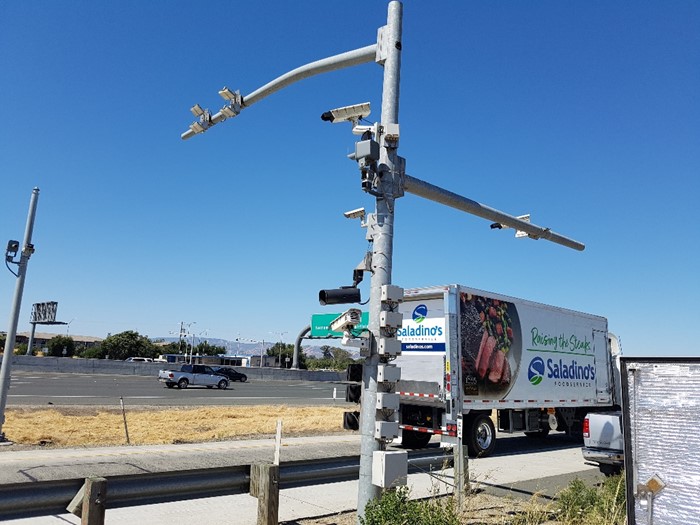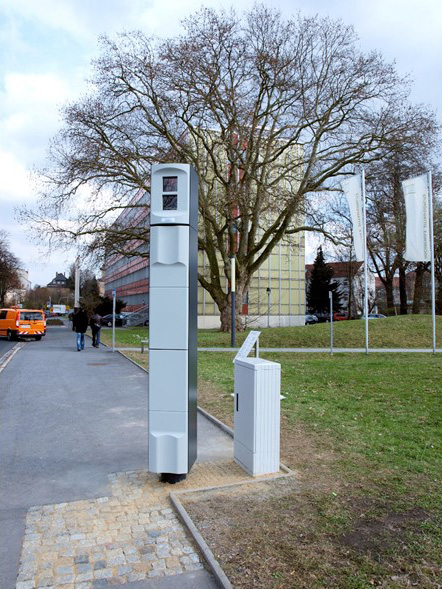
A series of concurrent developments is resulting in comprehensive changes to the products and services offered by International Road Dynamics (IRD). The outcomes are a greater range of safety and asset-preserving solutions, technologies with greater geographic reach, and greater added value from both new and existing offerings.
Some of these very positive evolutions are the result of company-specific initiatives. These include a range of internal efforts to extend the performance of existing products, combined with the acquisition of companies which provide key strategic advantages. Others are happening as influences from the wider world make bigger impressions, such as the increasing prevalence of artificial intelligence (AI) and the roll-out of 5G cellular telephony.
For more than four decades, IRD has been a pioneer in the field of Weigh in Motion (WiM). Art Bergan, one of the company’s founders, was instrumental in taking the concept of accurate gross vehicle and individual axle weight measurement in live traffic lanes from academic research project to commercialised product.
At the time that he and a small cohort of like-minded individuals started the company in the late 1970s, there was no effective way to monitor unsafe or illegal practice other than the use of static weigh station facilities. As well as there being an absence of effective detection/enforcement solutions, there was also an absence of the data which gave an idea of the magnitude of the problem.
The use of in-ground WiM sensors has since become commonplace. Worldwide, it has had a direct, immensely positive effect on the safety of commercial vehicle operations (CVO). And it has done this with the smallest-possible effects on economic activity; being able to specifically target for further inspection only those vehicles and operators suspected of committing infringements means that those who are operating legally — usually the majority — can carry on with their business unimpeded.
Building the WiM portfolio
In recent months, the application set of IRD’s WiM product baseline has been broadened with the acquisition of German company Sensor Line.
Sensor Line’s in-pavement solutions are based on fibre-optics. They work much like their piezo-electric equivalents, the main difference being that the measurement medium is light, not electric charge — vehicles passing over a cable compress it and cause less light to pass through, and these variances can be measured to provide axle detection. They can also be interpreted to give weight information.
Fibre-optics are extremely accurate — Sensor Line’s products can detect a 0.3% light differential and can even pick up differences in atmospheric pressure; for comparison, a truck passing over typically causes a 10% change. Their use of light means that they offer a key advantage of immunity to RF interference, which suits them to locations where inductive loops might suffer or fail to consistently deliver the required information.
Fibre-optic sensors can be more costly to acquire on a per-installation basis. However, the initial expense belies a more complex equation in terms of performance and longevity. The Illinois Tollways’ 2016 installations of fibre-optic sensors, for instance, only became due for replacement in 2021. This represents a three-to-five times lifetime advantage over some alternative in-ground sensor technologies.
Mention of their application in the tolling sector is significant, as fibre-optic sensors can accurately detect and classify slow-moving and stationary vehicles. Whereas piezo-electric systems rely on a pulsed signal, and so can only monitor moving vehicles, fibre-optic sensors can detect the constant ‘squeeze’ of the volume change in a cable caused by a vehicle being atop. This makes them ideal for use at toll plazas, which can feature the unholy trinity of large traffic volumes, slow or standing traffic, and an RF-heavy environment.
Addressing tyre safety
WiM has remained a mainstay of IRD’s business. However, the company has diversified by adding to the range of safety issues that can be addressed using in-pavement sensor technology. An example is the Tire Anomaly and Classification System (TACS).

TACS identifies flat, missing, or mismatched diameter tyres on a dual tyre set — all conditions determined to be a high safety risk. It can be combined with virtual weigh station systems to achieve step-change improvements in asset monitoring and protection.
TACS is proving its worth daily in live deployments by providing users with a compelling safety case. It results in fewer incidents and fewer hard-shoulder compromises.
Pre-screening initiatives
Many factors contribute to safe, efficient CVO and another way in which unimpeded economic activity can be greatly facilitated is through automated vehicle pre-screening. The electronics within IRD’s iSINC are the core of a modular platform which enables a building-block approach to commercial vehicle monitoring and inspection.
In its most basic form, IRD’s systems use an iSINC as a WIM controller to obtain vehicle weights and, via roadside signs, to instruct overweight vehicles to report for inspection. These pre-clearance systems have a strong track record around the world. More complex systems can screen vehicles for many more safety issues in addition to weight.

IRD’s commercial vehicle enforcement platform has consistently demonstrated its ability to accommodate a growing application set as technologies emerge. For instance, in addition to WIM and tyre safety monitoring, it can also accept feeds from camera systems which detect licence plates/USDOT numbers, and from thermal inspection solutions. Direct enforcement and other highly-focused safety initiatives are supported. IRD’s systems can also track the permitted movements of outsize/overweight vehicles and loads. Any of these screening technologies may be implemented as part of virtual weigh station operations, just as they are at manned inspection facilities.
In the United States, these systems increasingly include electronic credential screening, as encouraged by initiatives such as the US Federal Motor Carrier Safety Administration’s Innovative Technology Deployment (ITD) Program.
IRD’s e-screening solution, the Intelligent Roadside Operations Computer (iROC), has now achieved 100 deployments. By being able to accommodate information feeds from multiple sources, iROC enables users to satisfy local requirements while complying with national/federal informational mandates and sharing agreed core data through centralised repositories. Adding iROC to IRD’s commercial vehicle enforcement systems enables screening against federally shared Safety and Fitness Electronic Records (SAFER) data, or custom/state-specific data sets to screen for intrastate vehicles or other local criteria.
Broadening the scope
Over the long term, the safety of CVO and the preservation of infrastructure have been strong focuses. IRD has also made an ambition of providing a greater level of safety and knowledge across a greater proportion of the road network, as exemplified by the vision-based iTheia count and classification solution.
iTheia complements WIM, as it provides roads administrations with data from locations which would otherwise prove difficult to gain access to with an in-pavement sensor. AI/machine-learning make their presence felt in iTheia’s development — prior to deployment, thousands of images are used to train the system to be able to derive very accurate information from image captures.
Because it is an above-ground solution, iTheia can be installed at busy locations with minimal workforce safety risk and without interrupting traffic flows. It can also be used at locations where the levels of traffic and traffic profiles do not justify a WIM installation. iTheia has been awarded NYSDOT’s Gold Standard. This opens the way to ready adoption by a number of other state DOTs across the US, and it is also available internationally.
This broadened toolset has been added to further with the arrival in the IRD group of companies of Belgium-based Icoms Detections and German company VDS.
Icoms Detections is a specialist in above-ground sensor technology for urban applications. These include intersection/traffic light monitoring and control, as well as an increasing number of solutions designed to detect, classify, monitor and protect vulnerable road users such as cyclists, users of electric scooters and pedestrians. VDS provides class-leading radar-based speed and red light enforcement solutions.
These two acquisitions shift IRD away from a purely CVO-oriented safety focus and extend the companies remit to cover other vehicle types/road users and the urban/inter-urban landscape.

Architecture upgrades
Less obvious, but no less profound, changes are going on in the background. The world is migrating to ecosystems, not discrete technologies. This implies the provision of data services, not just physical products.
Accepting that the technology is both accurate and dependable, the next step is to extract greater added value from it. Managed services will become a greater part of the company portfolio.
AI will enable some of this, as will the universal connectivity provided by 5G/the Internet of Things.
This requires a different balance between at-the-edge and Cloud computing. It requires changes to architectures if smart city-type applications, and a better balance of real-time and less time-critical processing, are to be achieved.
Further into the future, achieving digital handshakes with autonomous commercial vehicles is something that roads jurisdictions and solutions providers are gearing up for. Automated inspection will become more common, and the range of inspection types and processes will grow.
Sponsored content produced in association with IRD











